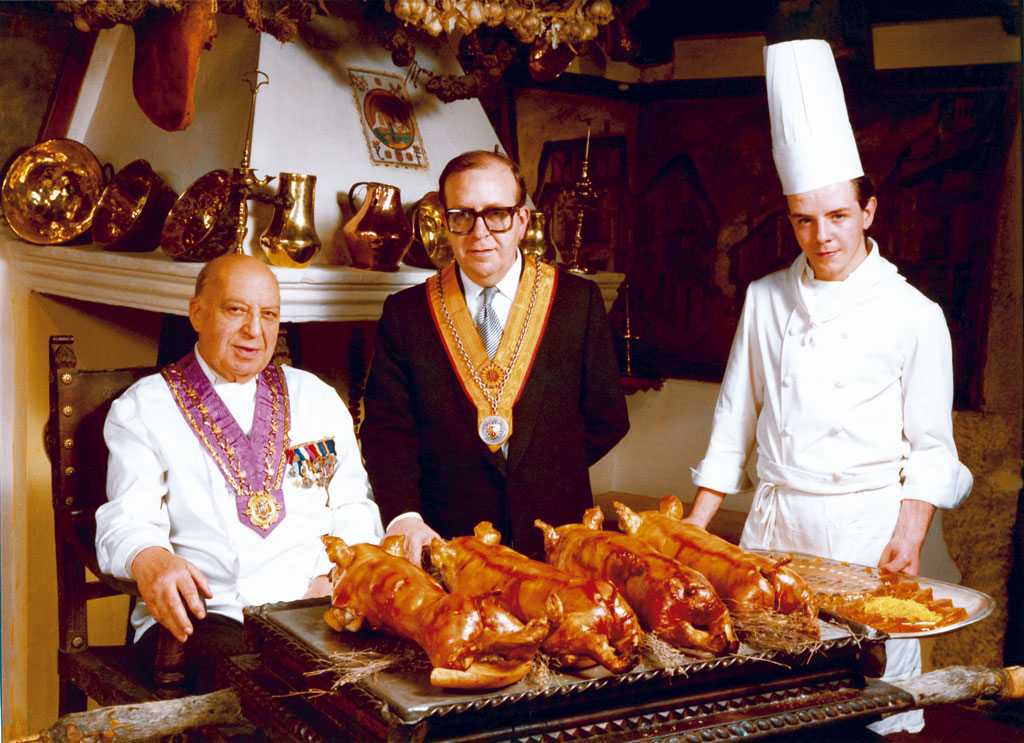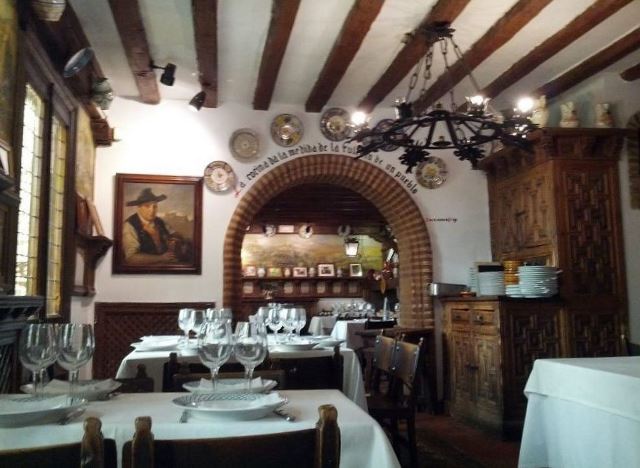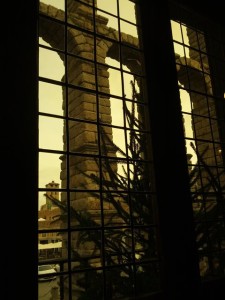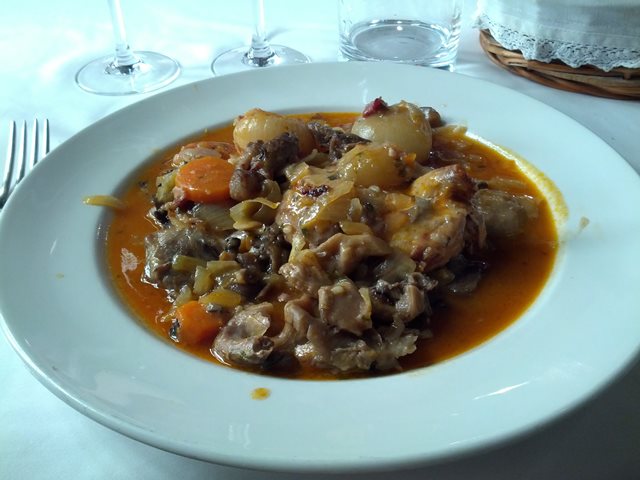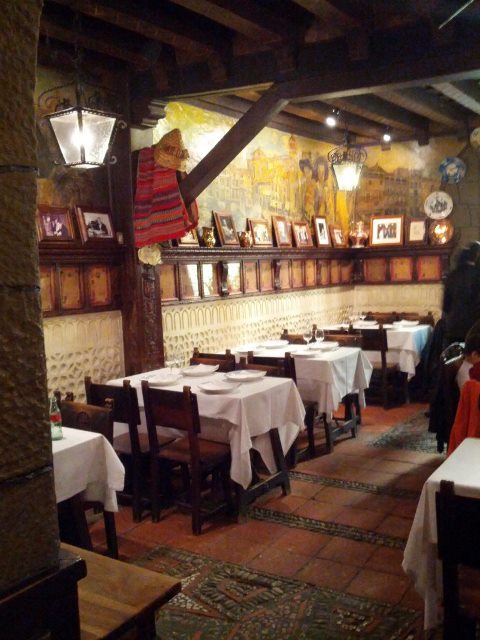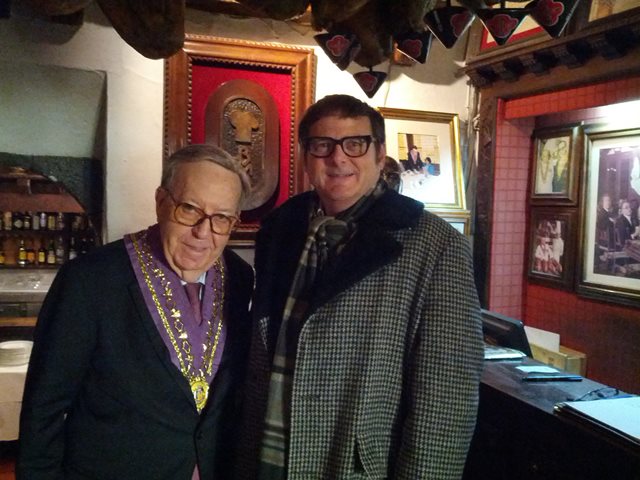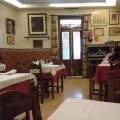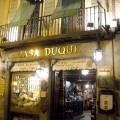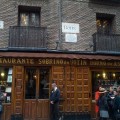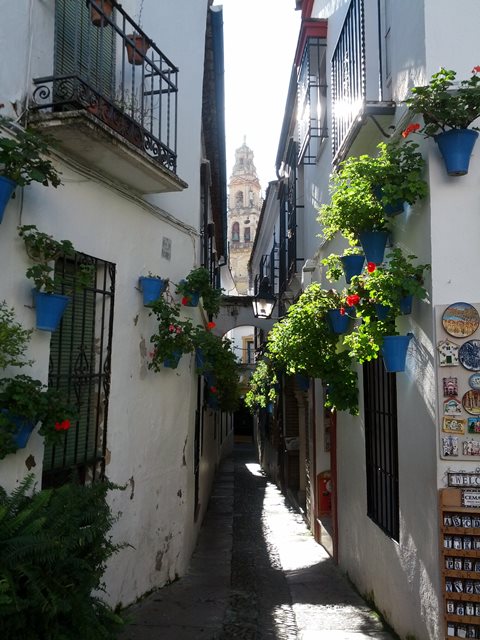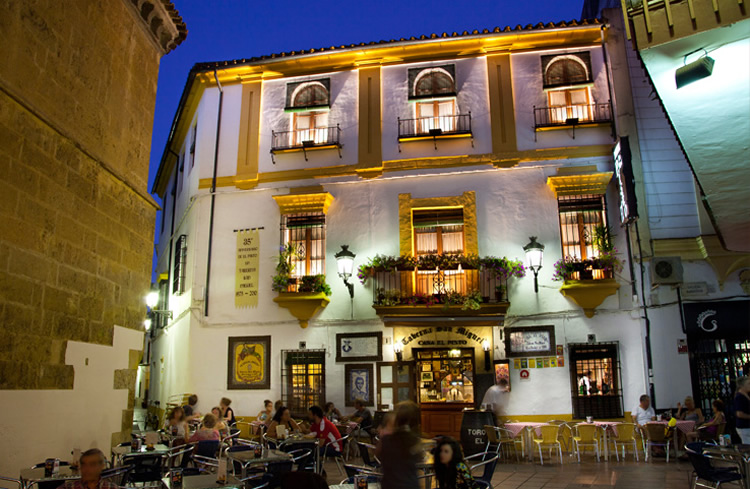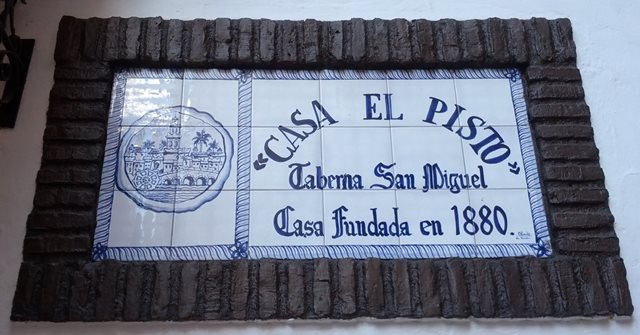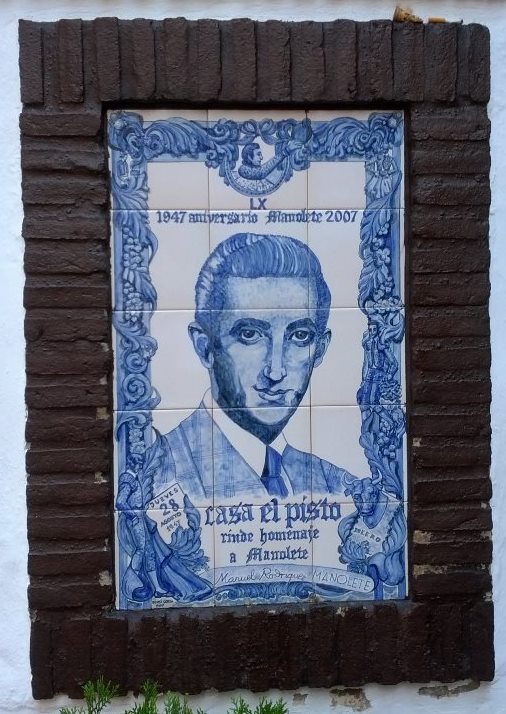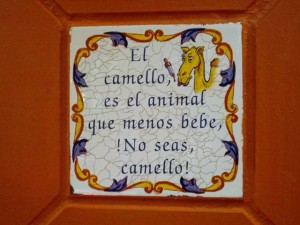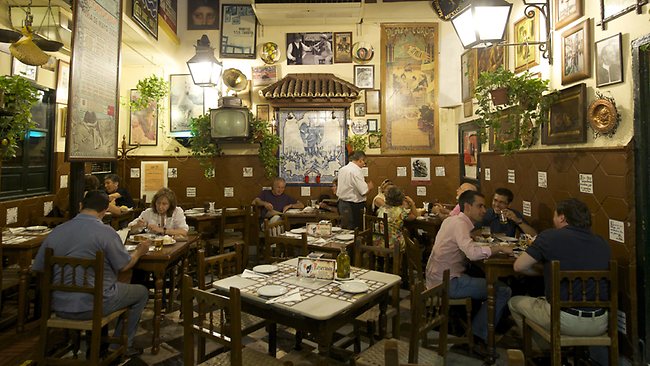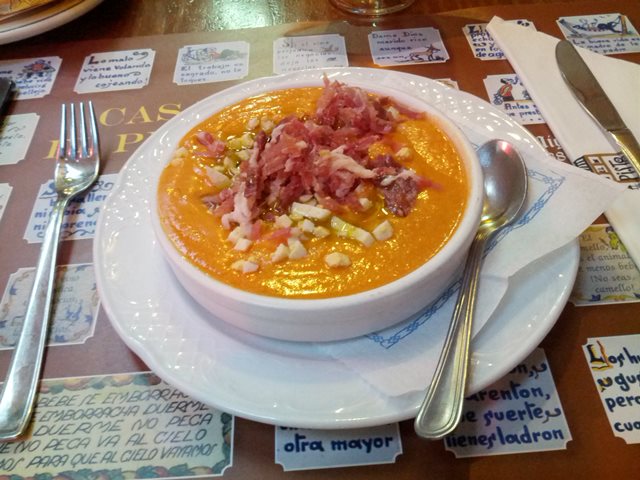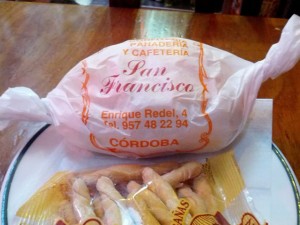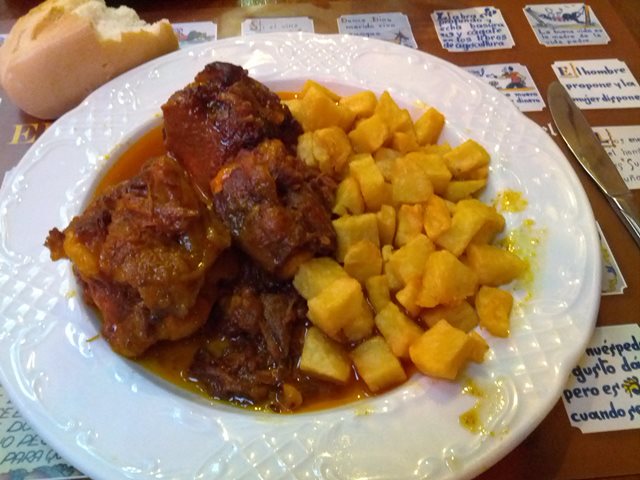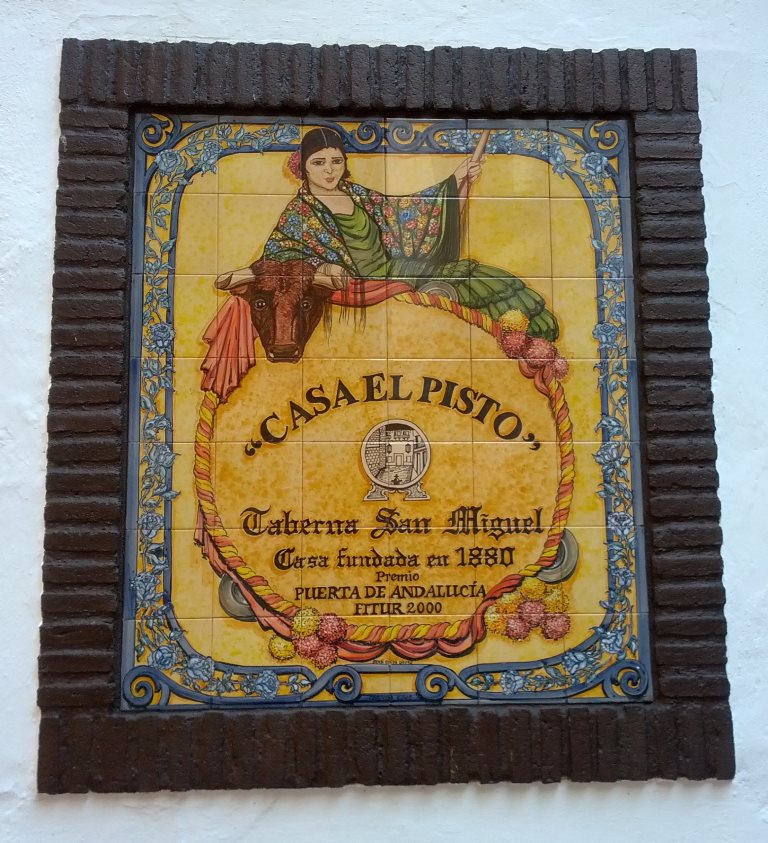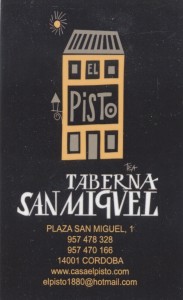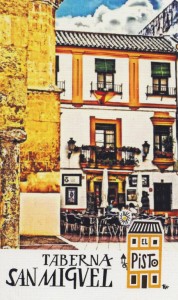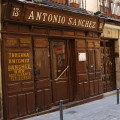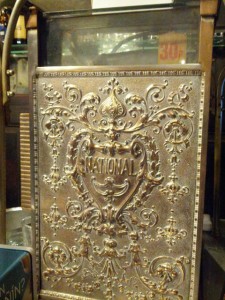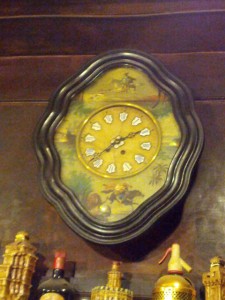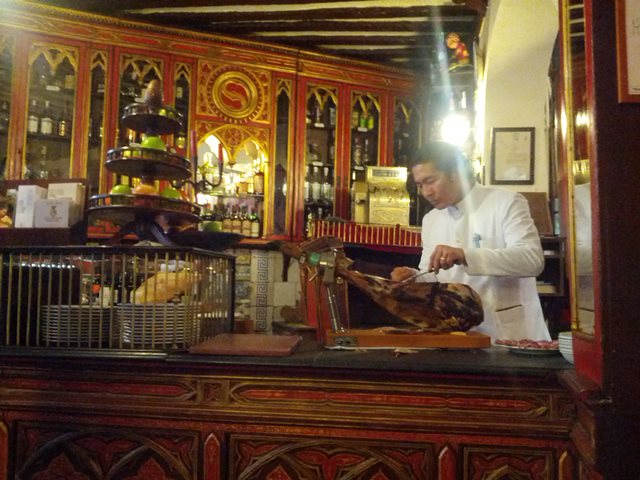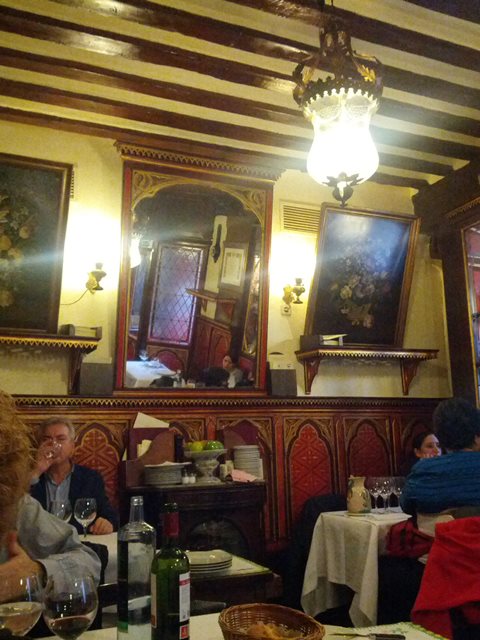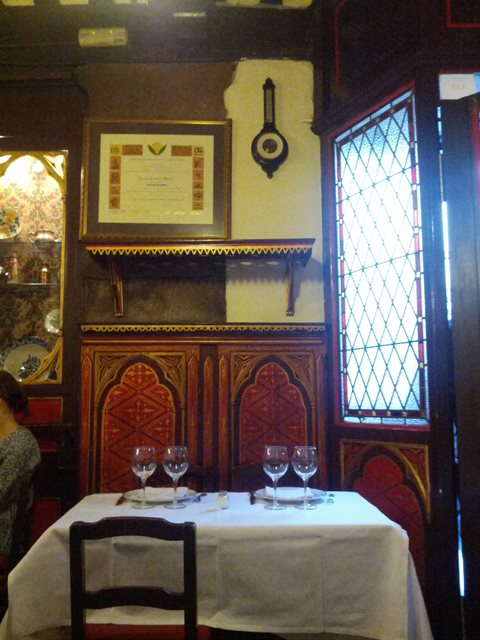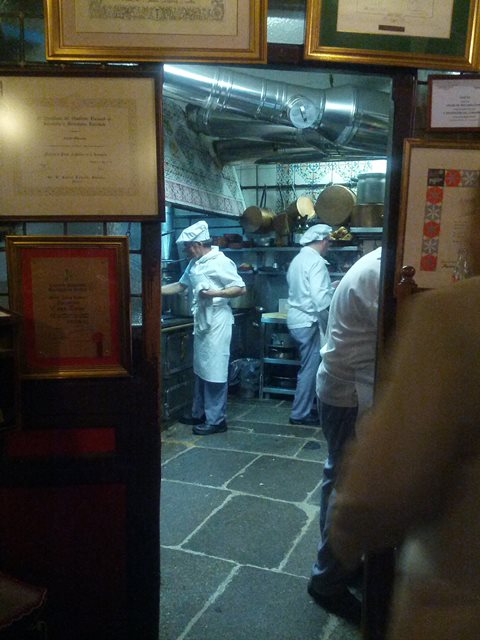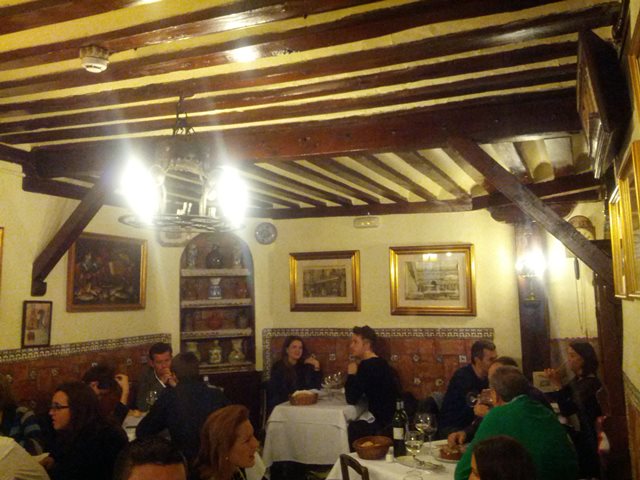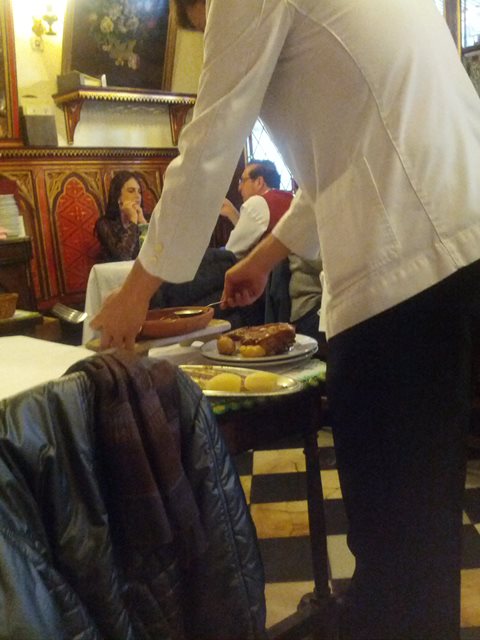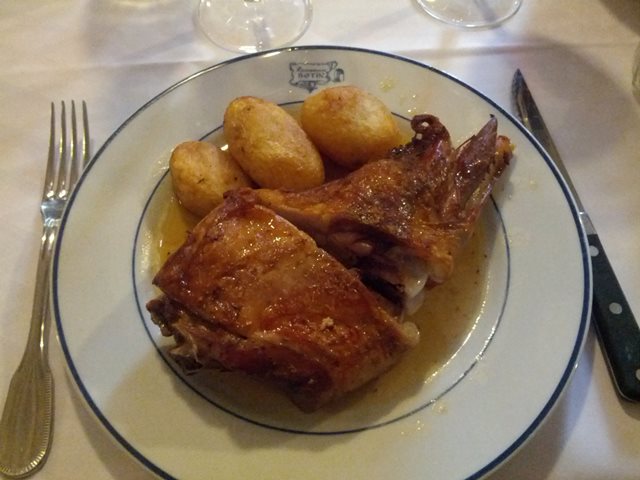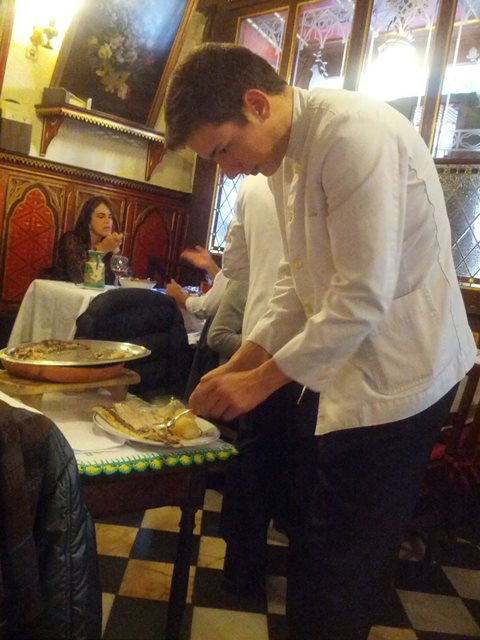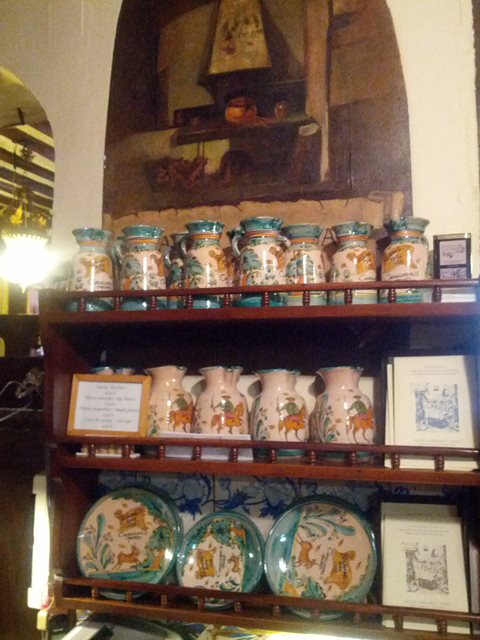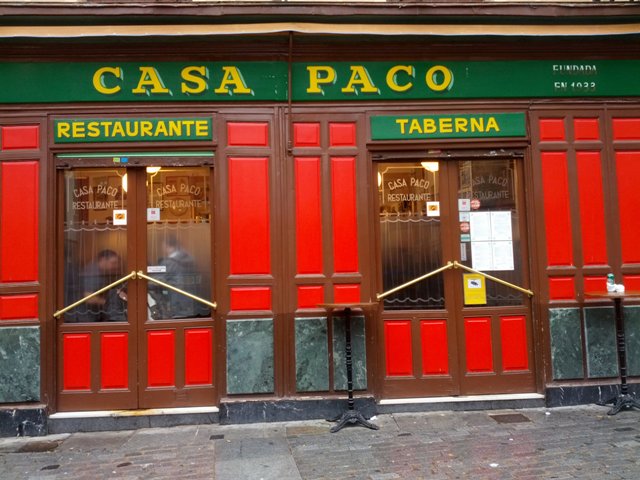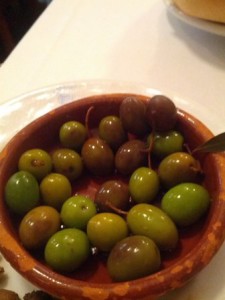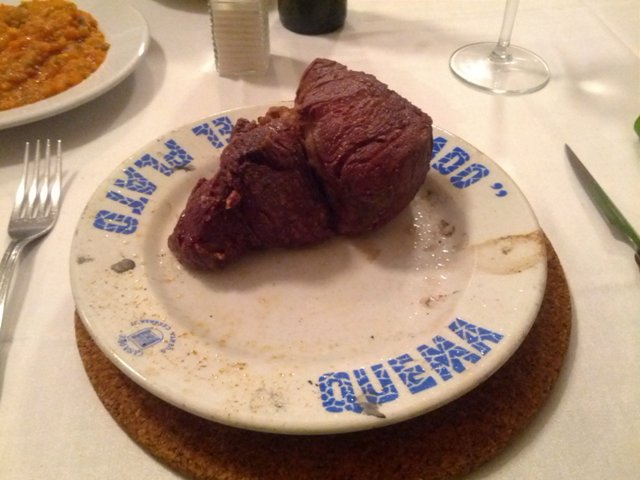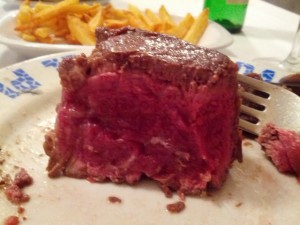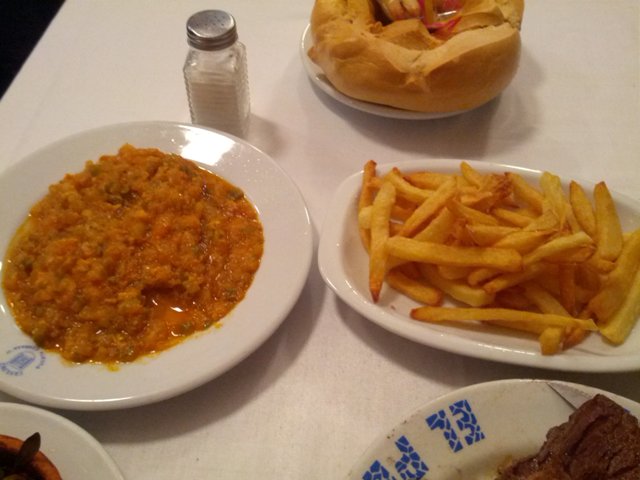The old town of Segovia in Spain is a short train ride from Madrid and a town everyone should visit on a day trip or, even better, an overnight from Spain’s capital. It’s a beautiful city spectacularly set on a hill surrounded by the old city wall, with a fairy-tale alcázar (palace) on one end (where Isabella I was crowned Queen of Castile and León), a gorgeous 16th century gothic cathedral in the middle, and a jaw-dropping 2000-year-old Roman aqueduct at the other end, built from 25,000 granite blocks without mortar or reinforcing. In 1985 the entire old town was declared a World Heritage Site by UNESCO.
Located next to the aqueduct on the Plaza del Azoguejo, Mesón de Cándido’s history as an inn (restaurants are often called inns in Spain) dates back to 1786. In 1931, Cándido López, a cook in Segovia since he was a child, purchased the inn, then called Mesón de Azoguejo. The restaurant, renamed Mesón de Cándido, quickly became famous for the Segovian specialty roasted suckling pig (cochinillo asado), among other dishes. In the photo above the original inn is on the right, with the words painted on the front: Mesón (inn), Casa Candido (Candido’s house), and Horno de Asar (broiler for roasting meats). In Segovia and the surrounding area the suckling pig must follow certain criteria to be of high quality and be roasted correctly until the skin is crisp so that when presented at the table the meat can be “carved” with the edge of a plate, as is the tradition started and made famous at Mesón de Cándido.
In 1941 the inn was enlarged and remodeled into what it looks like today, with several dining rooms filled with paintings and photographs, brass cookware, pottery, bric-à-brac, and murals portraying Segovian scenes. Over the years many famous persons, including royalty, politicians, and celebrities have visited the restaurant.
Cándido López’s son, Alberto Cándido, who holds the title Head Innkeeper of Castile, now runs the restaurant with his son, continuing the family traditions. The family’s pride in the restaurant shows in the gracious service I received from señor Cándido and his staff and in the excellent food I was served.
On my visit last year I took the high-speed train from Madrid, arriving in Segovia in about 30 minutes. From the train station outside of town you can take an inexpensive bus to the old town, or a taxi, which I did so I could check in to my hotel directly. I made reservations for lunch, asking for a table with a view of the aqueduct, and the above photo is the viewpoint I had from my table. Below is the aqueduct visible through the window.
As I was planning on having roast suckling pig for dinner that night I had a “light” lunch of a salad with tuna (a very fresh shredded tuna, not canned tuna like you would expect to be served in many restaurants in the U.S.) and a Castilian specialty, perdiz estofada (partridge stew), with some wine from Ribera del Duero. Other local specialties on the menu include sopa Castellana (Castilian garlic soup), Sepulveda-style roasted baby lamb, judiones de la Granja con oreja de cerdo (stew with white beans from La Granja, pigs ears and trotters), wild boar with apple, and their famous suckling pig. Save room for the special Segovian layer cake, ponche segoviano.
Mesón de Cándido
Plaza Azoguejo, 5, 40001 Segovia, Spain
Phone: +34 921 42 59 11
Open daily for lunch, 1:00pm – 4:30pm, and dinner, 8:00pm – 11:00pm



